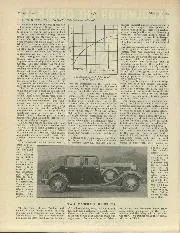
TWO MASERATI RECRUITS.
TWO MASERATI RECRUITS. The two French drivers, Braillard and Falchetto, have always worked in close co-operation in Continental races, always driving Bugattis. They have made extensive plans for 1934, and…
The combination of Roger Penske and star driver Mark Donohue brought innovation to many areas of the sport, but perhaps the duo’s most notorious achievement came with ‘Operation Talladega’ and what was perhaps the ultimate iteration of Porsche’s iconic 917 sports car.
American IndyCar driver AJ Foyt made headlines in 1974 when he lapped the high-speed Talladega oval at an average speed of 217mph. During the 1973 season, Donohue and Penske were riding high with the 917-30 in the Can-Am series, winning six of the eight races as the Penske-Donohue-engineered 917 earned the nickname ‘Can-Am Killer’. Its success was so widespread that the model was literally killing off interest in the formula, leading to its retirement after rule changes for 1974.
With backing from both Porsche and oil company Sunoco, Penske and Donohue decided in 1975 to dust off the machine and together set out to break Foyt’s record, aiming for a 220mph run.
“We figured that the speed record would be a nice thing to have,” says Roger Penske, looking back at the attempt. “We were just hoping the Porsche didn’t fly out of the track because Talladega is a very fast oval. We knew the car would be really fast, but we’d never really opened it out before because it was such a beast.”
With the Porsche engineered solely for top-speed-limited road circuits, the modifications represented a big challenge. Donohue conducted extensive testing at Daytona, only for the Porsche’s regular 5.4-litre engine to suffer repeat failures under the stress of flat-out running.

To fix the issue, Donohue convinced Porsche to produce a smaller 5-litre 12-cylinder turbocharged unit instead with additional intercoolers. Regardless, the car could still produce upwards of 1500bhp.
Donohue and Penske arrived at Talladega to clouded skies and the threat of rain, and Donohue knew he had to make it count. Early runs identified a few issues as the steeper banking at Talladega was very different terrain to Daytona at 200mph.
“As you approach the turn your sense of the car tells you it won’t be able to make the turn ahead, so you instinctively back off the throttle, then as soon as you do you realise you shouldn’t have,” said Donohue at the time. “Once you’re committed and the car is settled and the suspension has deflected you feel safe and can go wide open, ‘flat’ as they say in Europe.
“Because the 917 wasn’t designed for this purpose, there’s a lot of downforce, but no thought had been given to drag, so we had to look to reduce that.
“Turn two was the worst part because the banking angle tends to level out before the turn does so the wind catches the front of the car and pushes it across the track towards the wall…”
Penske reckoned the difference between Donohue’s target and Foyt’s run was a mere 0.2sec in timing terms. On his final run, despite rain forming, Donohue lapped at 221.160mph.
The event data log mentions that Donohue was ‘disturbed by raindrops on his visor, so entered the banked turn slower than probably possible’, yet he still became the fastest man to lap a permanent circuit anywhere in the world.
Penske adds: “Mark was at his absolute best that day; we got the speed record, had a beer and went home.”
Tragically, it would be Donohue’s final triumph as he was killed just days later during testing for the Austrian Grand Prix. While the world closed-course speed record has since been surpassed by Gil de Ferran, who achieved 241.428mph at California during qualifying for a Champcar event in 2000, and despite Foyt’s claim that he would return to Talladega to shoot for 225mph, nobody has ever attempted to break Donohue and Penske’s benchmark at the Alabama speedbowl.



